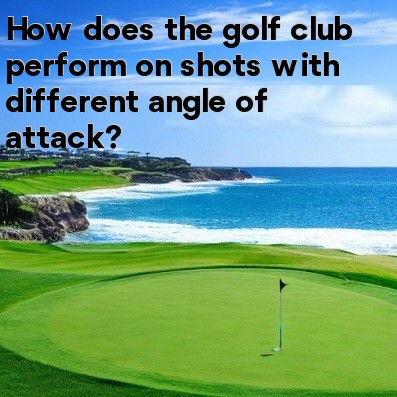
How Does the Golf Club Perform on Shots with Different Angle of Attack?
In golf, the angle of attack refers to the direction and angle at which the clubhead strikes the ball during impact. It plays a crucial role in determining the trajectory, distance, and spin of the shot. Different angle of attack can result in varying outcomes, and understanding how the golf club performs on shots with different angle of attack is essential for golfers looking to improve their game.
When it comes to shots with different angle of attack, there are three main categories to consider: steep, shallow, and neutral. Let's explore how the golf club performs in each of these situations.
1. Steep Angle of Attack:
A steep angle of attack occurs when the clubhead contacts the ball with a downward strike. This type of angle of attack typically leads to higher trajectories and more backspin on the ball. When the clubhead comes down on the ball steeply, it creates a “divot” effect, digging into the ground before making contact. This can result in less distance but more control over shots.
- Pros: Increased spin, better control, and accuracy
- Cons: Decreased distance, potential for chunked or thin shots
2. Shallow Angle of Attack:
A shallow angle of attack occurs when the clubhead skims the ground before making contact with the ball. This type of angle of attack tends to produce lower trajectories and less backspin. The club comes into contact with the ball more cleanly, without a significant divot. A shallow angle of attack is often associated with a sweeping motion, rather than a downward strike.
- Pros: Increased distance, potential for more roll, reduced spin
- Cons: Reduced control, potential for topping the ball
3. Neutral Angle of Attack:
A neutral angle of attack occurs when the clubhead strikes the ball with a level or slightly descending blow. This type of angle of attack is considered the optimal one for most golfers, as it offers a balance between control and distance. A neutral angle of attack allows the golfer to make solid contact with the ball, compressing it against the clubface.
- Pros: Good balance between distance and control
- Cons: None specific to the angle of attack
It's important to note that the optimal angle of attack may vary depending on the type of shot you're attempting. For example, shots that require more backspin, such as approach shots onto a green, may benefit from a steeper angle of attack. On the other hand, shots that require more distance, like drivers off the tee, may benefit from a shallower angle of attack.
Ultimately, finding the right angle of attack for your swing and the shot at hand is a matter of experimentation and practice. Working with a golf instructor or coach can also provide valuable insights into how the golf club performs with different angle of attack and help you fine-tune your technique.
In conclusion, the golf club's performance on shots with different angle of attack varies. Whether it's a steep, shallow, or neutral angle of attack, understanding the impact on trajectory, distance, and spin can assist golfers in making better-informed decisions on the course.





